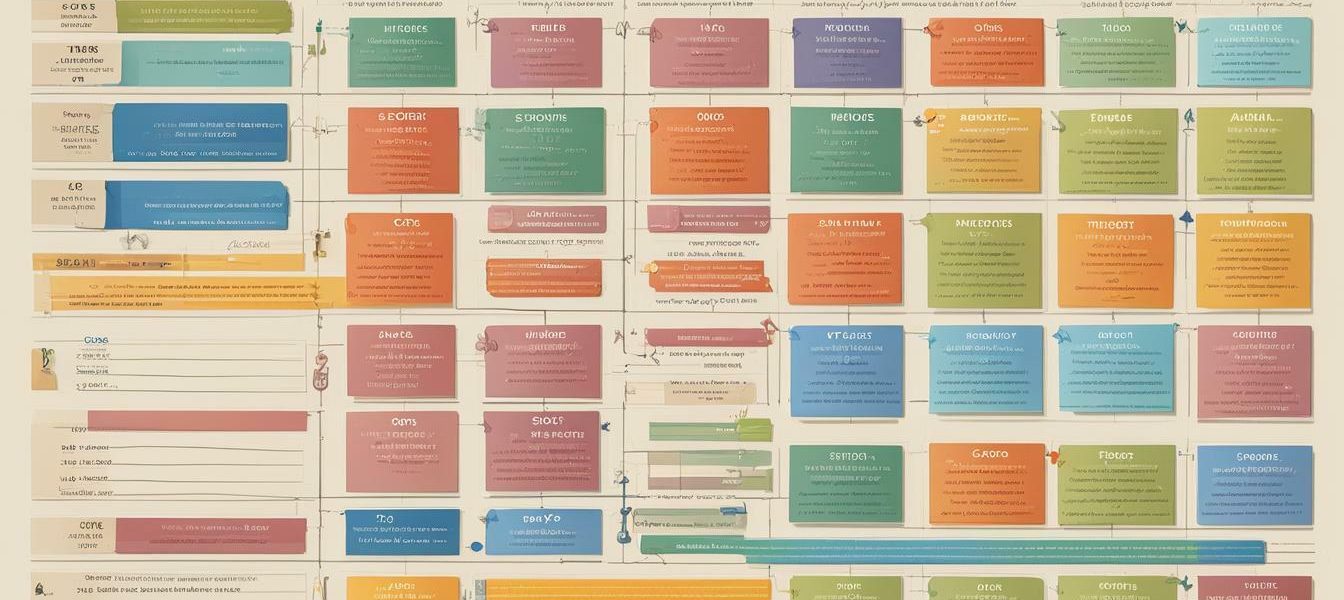
How Many Periods Are In High School
High school schedules can be confusing—between the number of periods, the length of each period, and the various courses offered, it can be challenging to keep everything straight. It’s essential to understand how high school scheduling works to help ensure a fulfilling and successful educational experience.
Key Takeaways:
- Knowing the typical number of periods in high school helps in planning and managing time effectively.
- High school scheduling is determined by several factors, including state laws, district policies, and school resources.
- Balancing a challenging course load with extracurricular activities is crucial for personal growth and college applications.
Understanding High School Scheduling
High school scheduling is the process of organizing the school day into a series of class periods. Each period is typically around 45-60 minutes long, with a short break between each period to allow students to transition between classes. The number of periods in a school day varies depending on the school and the district.
The high school timetable is a crucial component of the scheduling process. It outlines the specific days and times that each class meets, along with the teacher, classroom, and other important details. The timetable is carefully crafted by the school administration to ensure that all necessary subjects are covered and that students have the opportunity to take the courses they need to graduate.
High school scheduling is influenced by a variety of factors, including the number of students, the availability of teachers, and the resources and facilities of the school. In some cases, schools may offer alternative schedules, such as block scheduling, which involves longer periods of instruction but fewer classes per day.
The Role of School Counselors in High School Scheduling
High school counselors play an important role in the scheduling process. They work with students to develop individualized schedules that meet their unique needs and interests. Counselors may recommend options such as advanced placement classes, electives, or specialized programs that align with students’ career goals or college aspirations.
It is important for students to communicate openly with their school counselors about their academic and personal goals. This can help ensure that their schedules are tailored to meet their needs and that they have access to the resources and support they need to succeed.
The Typical US High School Schedule
High school schedules can vary depending on location, school size, and individual student needs. However, the typical US high school schedule typically consists of 6 to 8 class periods per day, with each period lasting between 45 and 55 minutes.
Most high schools follow either a block schedule or a traditional schedule. In a traditional schedule, students attend all of their classes every day for the entire school year. In a block schedule, students attend a reduced number of classes each day for longer periods of time, typically for a semester or trimester, depending on the school’s calendar.
| Class Period | Duration |
|---|---|
| 1st period | 45-55 minutes |
| 2nd period | 45-55 minutes |
| 3rd period | 45-55 minutes |
| 4th period | 45-55 minutes |
| 5th period | 45-55 minutes |
| 6th period | 45-55 minutes |
| 7th period | 45-55 minutes |
| 8th period | 45-55 minutes |
Some schools may also offer zero or ninth periods, which are extra periods before or after the regular school day for students to take additional classes, participate in extracurricular activities, or receive tutoring.
It’s important to note that while the number of periods may seem fixed, the actual schedule can vary depending on individual student needs, such as special education services or individualized learning plans. Additionally, schools may offer alternative scheduling options, such as early release days or modified schedules during exam periods.
Exploring High School Course Load
High school course load refers to the number of courses and subjects that students take during a school year. The number of periods in a high school schedule is often determined by the course load necessary to fulfill graduation requirements. While a minimum number of courses is typically required, most high schools offer a variety of elective courses that allow students to customize their schedules according to their interests and goals.
High school curriculum typically includes core academic subjects such as English, mathematics, science, and social studies. In addition, students may have to take additional courses to fulfill specific requirements for graduation. Examples of these courses include physical education, health, and electives in fine arts, foreign languages, or vocational fields.
It’s important for students to maintain a balanced course load that challenges them academically while also allowing time for extracurricular activities and personal interests. A heavy course load may lead to stress, fatigue, and a decline in academic performance. On the other hand, a light course load may limit opportunities for personal growth and academic enrichment.
Did you know? Some high schools offer advanced placement (AP) courses, which are college-level courses that can earn students college credit if they pass an exam. These courses can be more rigorous and demanding than regular courses, so it’s important for students to carefully consider their course load before taking them.
In some cases, students may need to work with their guidance counselor to plan their course load and ensure that they are meeting all requirements for graduation and beyond. Students who are interested in pursuing specific careers or college majors may need to take certain courses or electives, so it’s important to research any prerequisites or requirements that may be necessary.
Tips: To maintain a balanced course load, students should prioritize courses in their areas of interest and strength while also challenging themselves with new subjects and experiences. It’s important to consider time and energy commitments when planning a schedule, as well as any extracurricular activities or part-time jobs that may impact available study time.
Benefits of a Balanced Schedule
Having a well-balanced high school schedule offers numerous benefits to students. By taking courses in a variety of subject areas, students can expand their knowledge and skills, which may lead to new interests and hobbies. Additionally, a balanced schedule can help prevent burnout and reduce stress levels.
When students have a mix of challenging and manageable classes, they can achieve a sense of accomplishment and maintain positive momentum throughout the school year. Mastery of a difficult subject can also help build confidence and boost self-esteem.
Furthermore, exploring different subjects can lead to discovering new passions and career paths. By taking elective courses, students may find that they have a particular talent or interest in an area they had not previously considered. This can help inform their future educational and career decisions.
Overall, a balanced high school schedule can enhance a student’s educational experience and provide opportunities for personal growth and exploration.
Challenges of a Packed Schedule
While a busy high school schedule can offer many opportunities for growth and learning, it can also present challenges for students to navigate. Below are some of the common difficulties that students may encounter:
Increased Stress Levels
With a packed schedule comes an increase in workload, which can lead to higher stress levels for students. The pressure to perform well in each class while also managing extracurriculars can quickly become overwhelming.
Tip: To manage stress, students can try to prioritize assignments and activities based on their importance and deadline. They can also make sure to take breaks throughout the day and engage in stress-relieving activities like exercise or meditation.
Time Management
With so many classes and activities to balance, time management becomes a crucial skill for high school students with packed schedules. Learning how to effectively allocate time for each task can be a challenge, but it is essential for success.
Tip: Students can create a daily schedule or to-do list to help them stay organized and on track. They can also use tools like calendars or time-tracking apps to monitor their progress and identify areas where they may need improvement.
Overall Well-Being
While a busy schedule can offer many benefits in terms of academic and personal growth, it can also take a toll on students’ overall well-being. Lack of sleep, poor nutrition, and limited social interaction can negatively impact mental and physical health.
Tip: Students should prioritize self-care activities like getting enough sleep, eating well-balanced meals, and staying connected with friends and family. They can also consider talking to a trusted adult or seeking professional support if they are struggling to manage their schedule.
Customizing the Schedule
One of the benefits of high school scheduling is the ability to customize your schedule to suit your individual needs and interests. This can be done through elective courses and advanced placement classes, among other options.
Elective courses allow students to explore a variety of subjects beyond the required core curriculum and can help them discover new passions. Advanced placement classes offer college-level material and may earn students college credits if they score well on the corresponding exams.
It’s important to note that while customizing your schedule can be exciting and rewarding, it’s also essential to maintain a balance. Taking on too many courses or extracurricular activities can lead to burnout and stress.
Elective Courses
Elective courses give students the opportunity to study subjects outside of the required core curriculum. These courses can include foreign languages, music, art, and technology subjects.
| Pros | Cons |
|---|---|
|
|
Advanced Placement Classes
Advanced placement (AP) classes offer college-level material and may earn students college credits if they score well on the corresponding exams. These classes can be challenging, but also rewarding for students who enjoy the subject matter and want to take on more advanced coursework.
| Pros | Cons |
|---|---|
|
|
When customizing your high school schedule, it’s important to consider your interests and future goals while also maintaining a balance with your required courses. Talk to your school counselor or teachers to see what options are available and which courses are a good fit for you.
Balancing Academics and Extracurriculars
High school is a time for students to explore not only academic subjects but also extracurricular activities. These can include sports teams, music groups, clubs, and volunteer work, among others. However, managing a demanding course load while participating in extracurriculars can be challenging. Here are some tips for finding a balance:
Prioritize
It’s important to prioritize activities that are most meaningful and enjoyable to you. If you’re passionate about sports, for example, you may want to dedicate more time to your team’s practices and games than to other extracurriculars.
However, academics should always come first. If you find that your extracurriculars are taking up too much time and causing your grades to suffer, it may be necessary to re-evaluate your commitments.
Time Management
Effective time management is key to balancing academics and extracurriculars. This includes creating a schedule to balance homework, studying, and extracurricular commitments. Block out specific times for each activity and stick to the schedule as much as possible.
It’s also important to avoid overcommitting. While it may be tempting to join multiple clubs or teams, taking on too much can lead to burnout and may negatively impact both your academic performance and extracurricular experiences.
Communication
Communication is key when balancing academics and extracurriculars. Make sure to communicate with your teachers, coaches, and advisors about your commitments and schedule. Let them know if you’re struggling to balance your responsibilities or if you need to make any adjustments.
Additionally, communicate with your peers and teammates about your availability. Make sure they are aware of any scheduling conflicts or special arrangements you may need to make.
Balancing academics and extracurriculars can be challenging, but finding a balance is achievable with careful planning, time management, and effective communication.
Navigating Schedule Changes
High school schedules can be subject to change due to a variety of factors, such as adding or dropping classes, conflicting schedules, or unforeseen circumstances. It’s important to approach schedule changes with a clear plan of action. Here are some tips for navigating schedule changes:
- Communicate with your school counselor or administrator to understand the options available
- Consider the impact of schedule changes on your overall course load and graduation requirements
- Be proactive in seeking solutions and advocating for your educational needs
- Take advantage of online resources, such as course catalogs or scheduling tools, to visualize your options
- Stay organized by keeping track of deadlines and important dates
Remember that schedule changes can be stressful, but they may also present opportunities to explore new subjects or pursue interests outside of your comfort zone. With careful planning and communication, you can navigate schedule changes with confidence and stay on track towards your academic goals.
Flexibility in Online Learning
Online learning offers students a flexible alternative to traditional high school scheduling. With the ability to access courses from anywhere, at any time, students can design their schedules to fit their individual needs and preferences.
One of the primary advantages of virtual classes is self-paced learning. Unlike traditional classrooms, where students must keep up with the pace of the teacher and the rest of the class, online courses allow students to move through the material at their own speed. This can be especially beneficial for students who require more time or repetition to fully understand a concept.
Online learning also offers students the opportunity to take courses that may not be available at their physical school. For example, a student who is interested in a particular subject or elective that is not offered at their high school can search for an online course and take it remotely.
Another advantage of online learning is the ability to access courses from anywhere. This is particularly useful for students who live in remote or rural areas, or who travel frequently. With an internet connection, students can participate in class discussions, submit assignments, and take exams from any location.
However, it is important to note that virtual classes are not without their challenges. Online learning requires self-discipline and time-management skills to stay on track. Students may also need to be comfortable with technology, and have a reliable internet connection to avoid disruptions.
Despite these challenges, online learning can provide a valuable option for students looking for flexibility in their high school scheduling. From self-paced learning to access to a wider range of courses, virtual classes can help students customize their educational experience to fit their unique needs and goals.
Planning for the Future
As high school students begin to think about their future goals, it’s important to consider how their course selections and schedules can support those aspirations. This may include taking prerequisite courses for certain majors, fulfilling college admissions requirements, or exploring career interests.
Students who are interested in attending college should research the admission requirements for their desired schools and make sure they are taking the necessary courses to meet those criteria. This may include taking advanced placement classes or participating in extracurricular activities that showcase their leadership or academic abilities.
For those who may not be interested in attending college, it’s still important to consider their career aspirations and how their high school courses and experiences can prepare them for those paths. This may include taking vocational courses or internships that provide hands-on training and experience in their chosen fields.
Ultimately, high school is a time for exploration and discovery. By considering their future goals and interests, students can create a schedule that allows them to pursue their passions while also meeting the necessary requirements for graduation and beyond.
Conclusion
Understanding the number of periods in high school and how to navigate the scheduling process is crucial for students to have a successful educational journey. A well-balanced schedule can provide students with a diverse range of learning experiences and opportunities for personal growth.
It is important to prioritize and manage a busy schedule, finding a balance between academics and extracurricular activities. Students should also consider future goals when planning their course load and seek support from school counselors or administrators when needed.
Online learning can offer more flexibility in high school scheduling, but it also presents its own set of challenges. It is essential for students to stay organized and self-motivated in a virtual classroom environment.
By customizing their high school schedule and staying informed about scheduling options and changes, students can create a pathway to success that aligns with their individual needs and interests.



